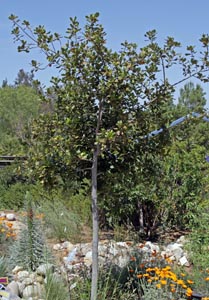 Sweet bay is a medium-sized tree, whose aromatic leaves are used as a culinary herb (bay leaf), earning it the distinction of herb of the year 2009 by the International Herb Association. The plant Laurus nobilis (family Lauraceae) is widely cultivated in many regions of the world where it is used primarily as a culinary herb now but in its native Mediterranean it was also used medicinally and culturally. It had the reputation of protecting against natural disasters, especially lightening strikes, and was used in the laurel wreaths worn by ancient poets, athletes, soldiers and Roman Emperors to symbolize victory or accomplishment. Other common names for this species include bay, bay laurel, grecian laurel, laurel and true laurel. Other trees commonly called bay include California laurel (Umbellularia californica) and bay rum tree (Pimenta racemosa), whose leaves and twigs are distilled to produce oil of bay, which is used in perfumery and in the preparation of bay rum (an aftershave or hair tonic, not a beverage). The related L. canariensis, native to the Canary Islands and Madeira, is less hardy than sweet bay and has longer, broader, less aromatic leaves.
Sweet bay is a medium-sized tree, whose aromatic leaves are used as a culinary herb (bay leaf), earning it the distinction of herb of the year 2009 by the International Herb Association. The plant Laurus nobilis (family Lauraceae) is widely cultivated in many regions of the world where it is used primarily as a culinary herb now but in its native Mediterranean it was also used medicinally and culturally. It had the reputation of protecting against natural disasters, especially lightening strikes, and was used in the laurel wreaths worn by ancient poets, athletes, soldiers and Roman Emperors to symbolize victory or accomplishment. Other common names for this species include bay, bay laurel, grecian laurel, laurel and true laurel. Other trees commonly called bay include California laurel (Umbellularia californica) and bay rum tree (Pimenta racemosa), whose leaves and twigs are distilled to produce oil of bay, which is used in perfumery and in the preparation of bay rum (an aftershave or hair tonic, not a beverage). The related L. canariensis, native to the Canary Islands and Madeira, is less hardy than sweet bay and has longer, broader, less aromatic leaves. 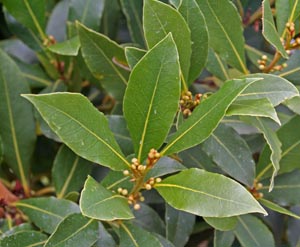 Bay is an evergreen plant that can be grown as a single-trunked tree or a multi-trunked shrub. It also adapts well to pruning and shaping, so can be used for topiary or grown as a standard. Because it is relatively slow-growing, it does well in containers. The glossy, dark green, leathery leaves are 3-4 inches long, lanceolate, with a strong midrib and wavy, finely serrated edges. The smooth bark is olive green to gray in color. The plants are dioecious, with star-shaped male and female flowers on separate plants. Inconspicuous but fragrant, pale yellow-green flowers in spring are followed by small, purplish-black, egg-shaped berries, each with a single seed, on established female trees. Trees are self-infertile, so a male tree is needed to set seed. Bees pollinate the flowers.
Bay is an evergreen plant that can be grown as a single-trunked tree or a multi-trunked shrub. It also adapts well to pruning and shaping, so can be used for topiary or grown as a standard. Because it is relatively slow-growing, it does well in containers. The glossy, dark green, leathery leaves are 3-4 inches long, lanceolate, with a strong midrib and wavy, finely serrated edges. The smooth bark is olive green to gray in color. The plants are dioecious, with star-shaped male and female flowers on separate plants. Inconspicuous but fragrant, pale yellow-green flowers in spring are followed by small, purplish-black, egg-shaped berries, each with a single seed, on established female trees. Trees are self-infertile, so a male tree is needed to set seed. Bees pollinate the flowers. 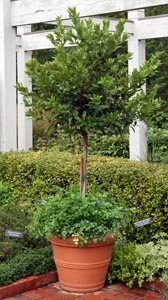 L. nobilis is widely grown as an ornamental plant in mild climates (zones 7-10), but can be grown as a long-lived houseplant or outdoor container plant in cold climates. Although it prefers well-drained soil and regular moisture, it is fairly tolerant of most conditions but can never be allowed to dry out completely. In its native areas it grows amid damp rocky ravines, thickets and old walls. Indoor plants can be moved outdoors in the spring and back inside in the fall when temperatures are consistently above freezing. If kept in a cool room (35-60˚F), the tree will stay dormant and does not need much light and very little water (just enough to keep the soil barely moist). In a warmer room provide regular watering like any houseplant and as much sun as possible. In the Midwest, container-grown bay trees thrive in full sun (after being acclimated from the darker indoors) but in warmer climates they may benefit from light shade.
L. nobilis is widely grown as an ornamental plant in mild climates (zones 7-10), but can be grown as a long-lived houseplant or outdoor container plant in cold climates. Although it prefers well-drained soil and regular moisture, it is fairly tolerant of most conditions but can never be allowed to dry out completely. In its native areas it grows amid damp rocky ravines, thickets and old walls. Indoor plants can be moved outdoors in the spring and back inside in the fall when temperatures are consistently above freezing. If kept in a cool room (35-60˚F), the tree will stay dormant and does not need much light and very little water (just enough to keep the soil barely moist). In a warmer room provide regular watering like any houseplant and as much sun as possible. In the Midwest, container-grown bay trees thrive in full sun (after being acclimated from the darker indoors) but in warmer climates they may benefit from light shade. 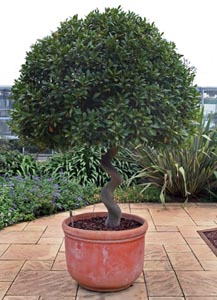 Once established, prune the bay tree annually to keep it growing vigorously – also providing supply of bay leaves for cooking. Pruning is best done when the tree is not actively growing to maximize growth but to maximize flavor, harvest leaves in the mid summer. Container-grown plants should be repotted to maintain a balance between the size of the roots and that of the top. Prune the roots by cutting off all the roots where they had touched the surface of the old pot whenever the plant is repotted. The roots should be pruned at least every two years (even if the plant is to stay in the same pot) and add fresh compost-soil mix to replace that removed with the roots. Bay is difficult to propagate but this can be done from fresh seed (germination is rather erratic and the seed bed needs to be kept warm), half-ripe cuttings taken in summer (which may take several months), or by air-layering. This plant has few pests but scales can be a problem, particularly indoors. The bump-like insects can occur on both the leaves and woody parts.
Once established, prune the bay tree annually to keep it growing vigorously – also providing supply of bay leaves for cooking. Pruning is best done when the tree is not actively growing to maximize growth but to maximize flavor, harvest leaves in the mid summer. Container-grown plants should be repotted to maintain a balance between the size of the roots and that of the top. Prune the roots by cutting off all the roots where they had touched the surface of the old pot whenever the plant is repotted. The roots should be pruned at least every two years (even if the plant is to stay in the same pot) and add fresh compost-soil mix to replace that removed with the roots. Bay is difficult to propagate but this can be done from fresh seed (germination is rather erratic and the seed bed needs to be kept warm), half-ripe cuttings taken in summer (which may take several months), or by air-layering. This plant has few pests but scales can be a problem, particularly indoors. The bump-like insects can occur on both the leaves and woody parts. 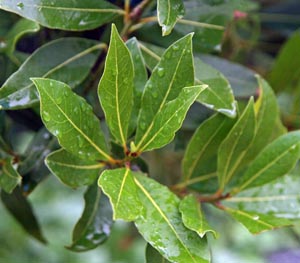 The mature leaves can be used fresh but when dried, the oils are more concentrated. This herb is typically used in stews, roasts, casseroles, and soups with a relatively long cooking time, and also for pickling, in marinades and in teas. Dried leaves can also be used in potpourri, for wreaths and other craft projects, or to repel pests such as silverfish or stored product insects. The essential oil is used in massage oil.
The mature leaves can be used fresh but when dried, the oils are more concentrated. This herb is typically used in stews, roasts, casseroles, and soups with a relatively long cooking time, and also for pickling, in marinades and in teas. Dried leaves can also be used in potpourri, for wreaths and other craft projects, or to repel pests such as silverfish or stored product insects. The essential oil is used in massage oil.
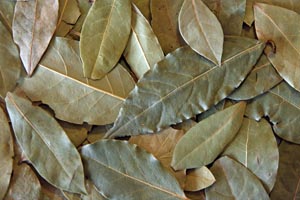 – Susan Mahr, University of Wisconsin – Madison
– Susan Mahr, University of Wisconsin – Madison
The bay leaf tree, scientifically known as Laurus nobilis, is an aromatic evergreen tree or shrub native to the Mediterranean region. Its dried leaves are a popular culinary herb, but images of the living bay leaf tree can provide a useful visual reference for identification. In this comprehensive guide, we will explore the key features and imagery of the bay laurel to help you recognize this iconic plant.
Overview of the Bay Leaf Tree
-
The bay leaf tree, also called bay laurel or sweet bay, can grow over 10-20 meters tall as a tree, or remain a bushy shrub.
-
It has oblong tapered leaves approximately 2-4 inches long that are smooth glossy, and deep green. The leaves are arranged alternately along the branches.
-
Tiny yellowish flowers bloom on stalks from the leaf axils in spring. The flowers later develop into olive-like purple fruits containing a single seed.
-
The tree has a spicy herbal scent when leaves or fruit are crushed. It thrives in warm, coastal climates with mild winters.
Identifying Features in Photos
Here are key visual identifiers to look for in images of the bay leaf tree:
Leaves
- Oval, lance-shaped leaves with smooth margins. Shiny dark green above and paler green below.
Flowers
- Small pale yellow flowers emerging from leaf axils on short stalks. Appear in spring.
Fruit
- Oblong purple fruits resembling large olives that contain one seed. Mature in fall.
Bark
- Young bark is reddish-brown and smooth. Ages to gray and deeply furrowed.
Shape
- Conical shape when young. Widens with age to an oval, rounded crown.
Height
- Typically grows to heights of 10-20 meters as a tree. Remains a bushy shrub when small.
Trunk
- Straight, sturdy trunk up to 1 meter wide supports branching canopy.
Where Bay Trees Grow
The natural habitat of the bay laurel consists of regions bordering the Mediterranean Sea with a similar climate, including:
- Portugal, Spain, France, Italy, Croatia, Albania, Greece
- Turkey, Syria, Lebanon, Israel, Egypt
- Libya, Tunisia, Algeria, Morocco
Bay trees thrive in warm temperate regions up to 1500 meters above sea level. They require mild, rainy winters and hot, dry summers with well-drained alkaline soil. The trees also grow along coastal California.
Uses of the Bay Leaf Tree
-
Culinary – Dried leaves are used to flavor soups, stews, meats, grains, and other dishes. They impart a subtle sweet, spicy flavor.
-
Medicinal – Leaves, essential oils, and fruits have antioxidant, antibacterial, and antifungal properties used in herbal medicine.
-
Ornamental – Commonly grown in gardens and parks for aromatic foliage. Responds well to pruning into shapes.
-
Wood – Fine-grained creamy white wood used for cabinetry, furniture, and woodturning projects. Has a slight aromatic quality.
-
Landscaping – Often trimmed into ornamental topiaries and hedges. Provides dense structure with bushy shape.
Cultural Significance
The bay leaf tree holds special symbolic meaning in many cultures:
-
Associated with honor, glory, prosperity, and warding off harm.
-
Ancient Greeks and Romans awarded bay leaf wreaths to victors.
-
Roman emperors wore bay leaf crowns as a sign of imperial power.
-
Remains a national emblem of Italy, Albania, and Turkey today.
With this visual guide, you can now confidently identify the iconic bay laurel tree from its glossy aromatic leaves to its purple olive-like fruits. Images of its flowers, bark, shape, and height provide further distinguishing features. Next time you use a dried bay leaf, you’ll be able to picture the living tree that produced it.
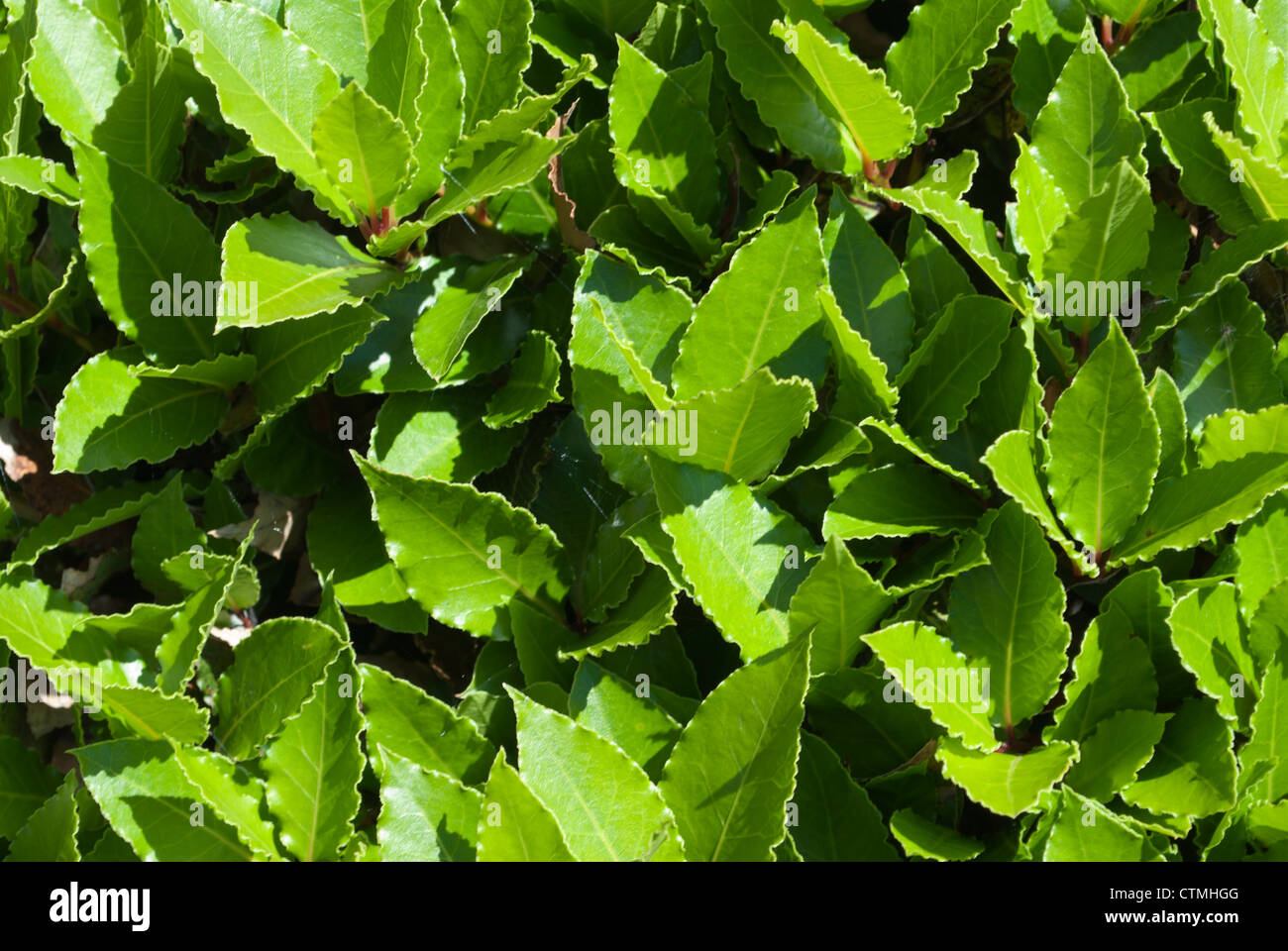
Ask Your Gardening Question
If you’re unable to find the information you need, please submit your gardening question here:
Featured Articles by Season
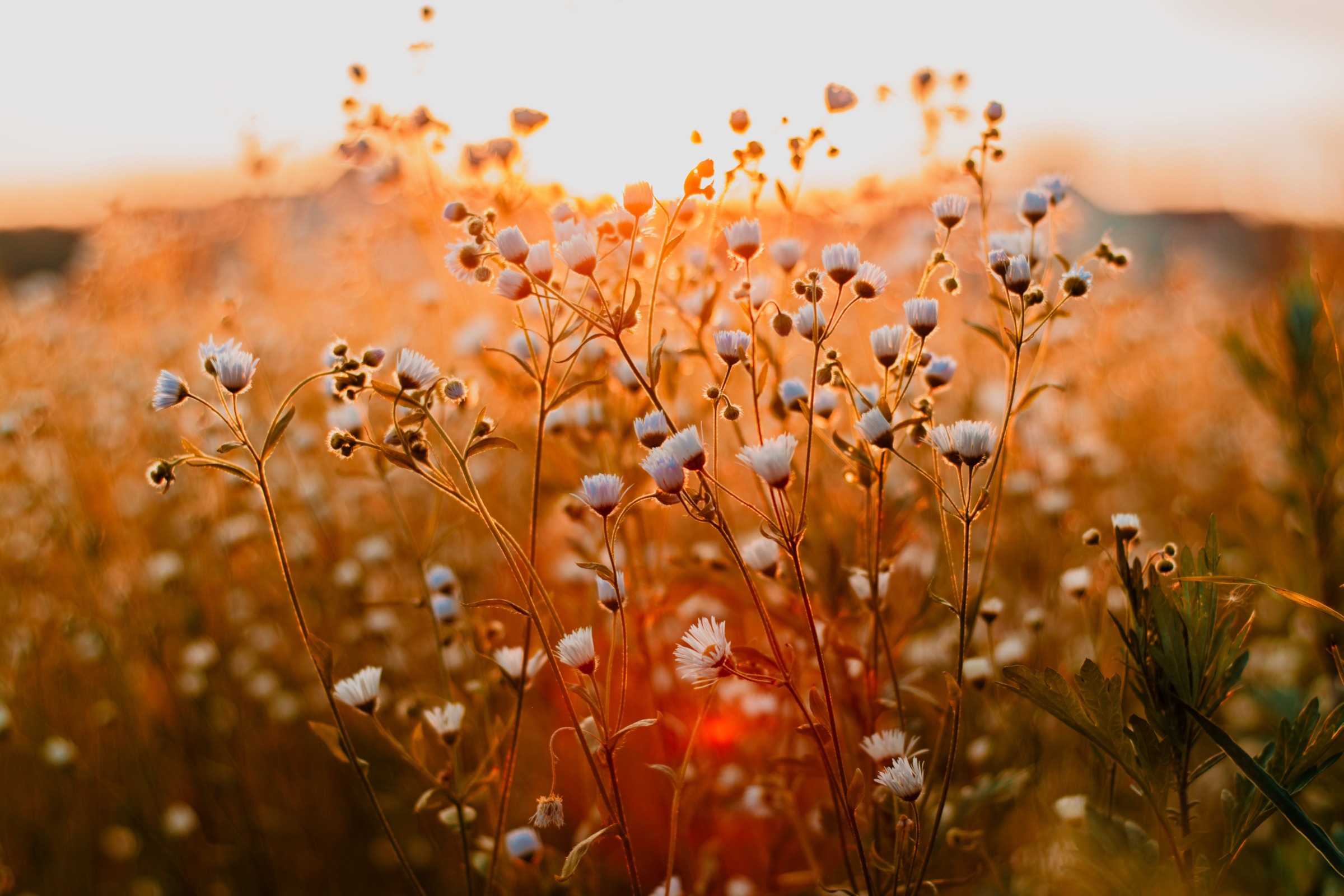
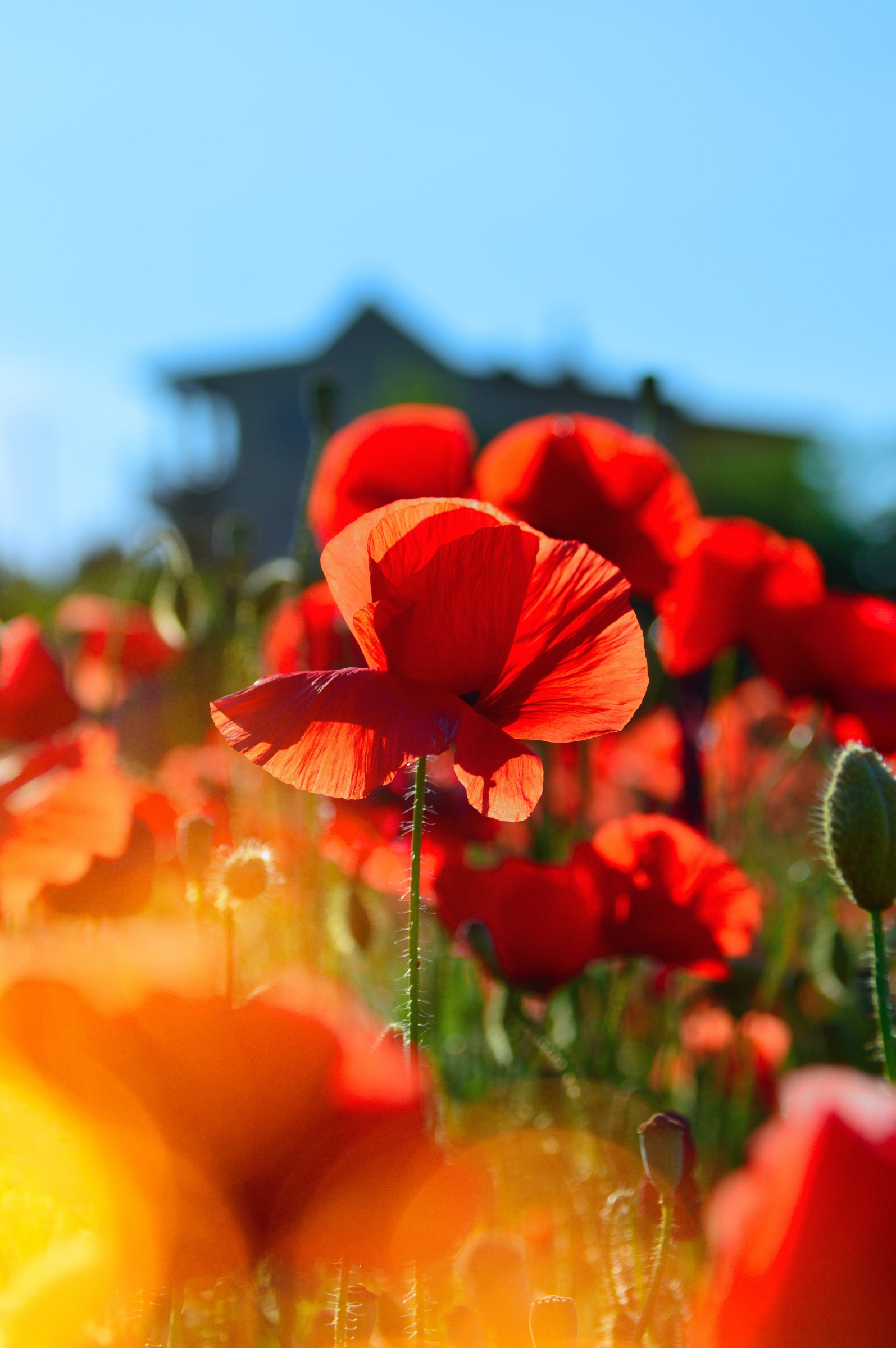
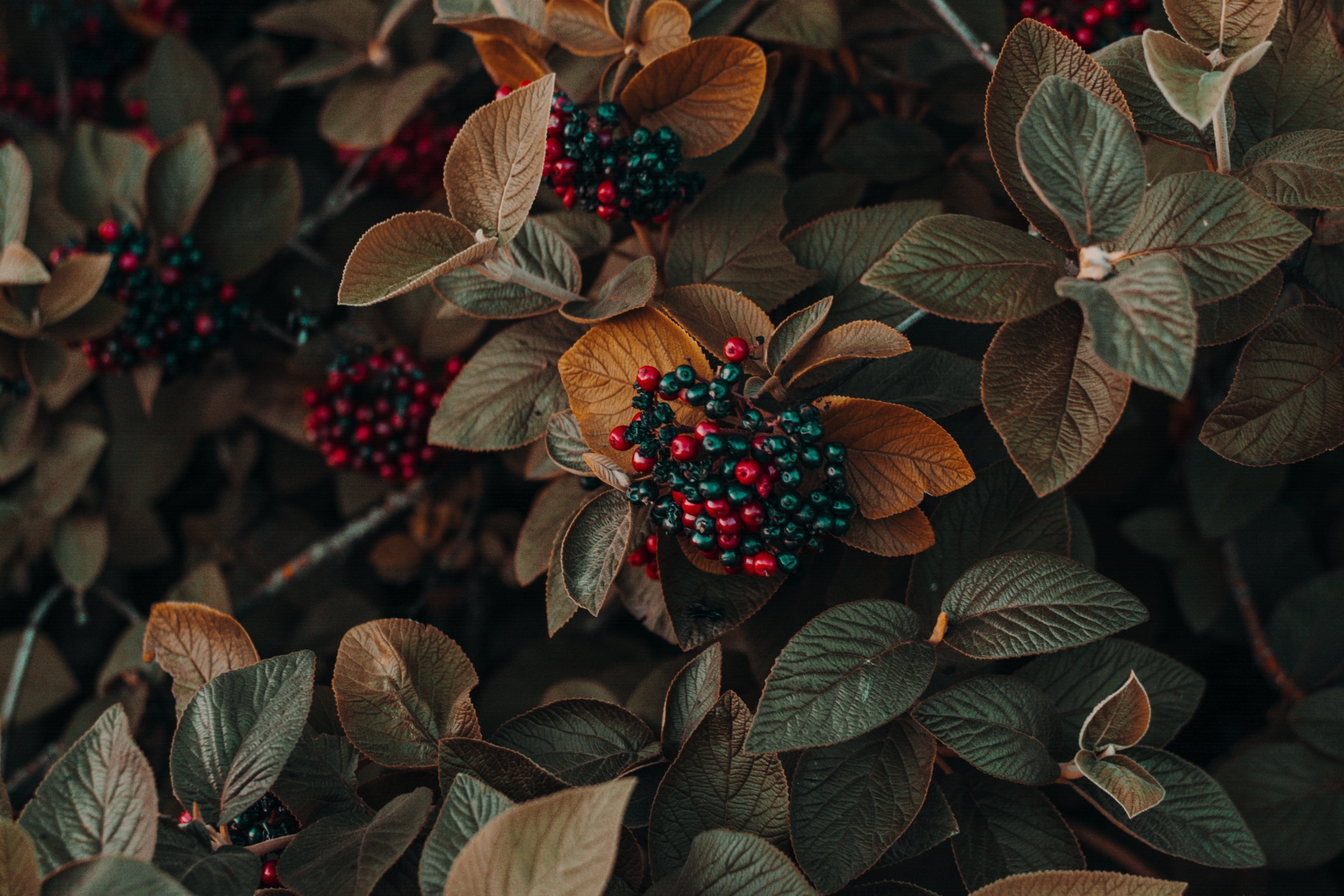
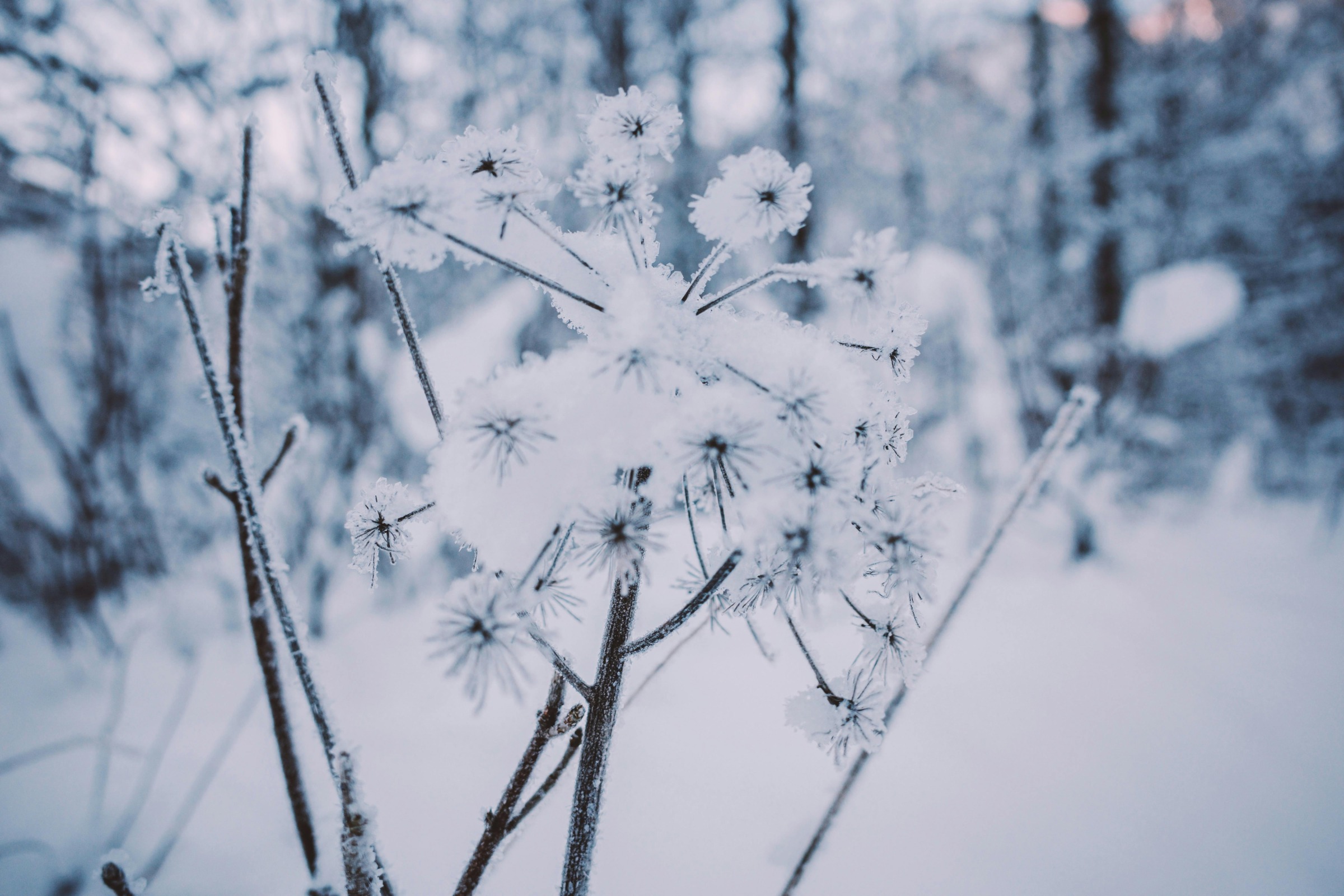
Bay leaf tree
FAQ
How do you tell if it’s a bay leaf tree?
Leaf Features
The leaves are smooth and leathery, with an elliptic shape and either smooth edges or edges lined with rounded teeth. One of the most distinctive features is the fragrant aroma they release when crushed. The vein pattern is pinnate and clear upon close inspection, contributing to its rich texture.
Can you grow bay leaves in the US?
Grow Your Own Bay Laurel Leaves
Bay laurel is a perennial herb that grows much like a bush or a tree. In warmer climates, this evergreen can be grown in the landscape. I actually planted a couple bay laurel bushes in my front yard in Houston that grew at least a foot taller each year.
What is another name for a bay leaf tree?
It is native to the Mediterranean region and is used as bay leaf for seasoning in cooking. Its common names include bay tree (esp. United Kingdom), bay laurel, sweet bay, true laurel, Grecian laurel, or simply laurel.
What is a bay leaf tree good for?
Bay leaf is a popular spice and flavouring ingredient in classic sauces, cuisines, seafood, poultry, meat, rice, soups, casseroles, marinades, pickled food, …
Where can I find bay leaf stock photos?
Browse Getty Images’ premium collection of high-quality, authentic Bay Leaf stock photos, royalty-free images, and pictures. Bay Leaf stock photos are available in a variety of sizes and formats to fit your needs.
What does a bay leaf tree look like?
In this article we’ll explore what the bay leaf tree looks like with a collection of photos and descriptions. The bay laurel (Laurus nobilis) is a flowering evergreen tree or shrub that can reach heights of 10-20 meters Its shiny, dark green oblong leaves are a signature feature, with a smooth margin and lanceolate shape that tapers to a point.
How do you identify a bay tree?
Knowing the typical habitats is also useful; bay trees thrive in warmer climates with well-drained soil and partial to full sun. They are found in gardens or pots. When learning how to identify a bay leaf tree, compare potential candidates to similar-looking plants like cherry laurel. Focus on differences in leaf shape, texture, and aroma.
Can you use leaves from a bay tree?
Do not use leaves from any tree you are not 100% certain is a bay tree. Use this checklist to avoid mistakes. Remember, that correctly knowing how to identify a bay leaf tree is crucial before using its leaves in cooking, or for any other purpose. Double-check all of the characteristics of the tree.
What is the botanical name of Indian bay leaf tree?
Botanical name is Cinnamomum tamala and belongs to Lauraceae (Laurel) family. Indian Bay Leaf Tree is also known as Tej Patta, Pulao Patta, Tamal Patra, Malabar leaf, Indian Cassia Bark, Indian Cassia and is native to India, Nepal, Bhutan, and China.
What do bay leaves taste like?
Bay leaves have a delicious and fragrant flavor that complements various dishes, including rice dishes, soups and stews, Catalan and Greek recipes, and Creole cuisine. They come from the bay laurel, a perennial shrub or tree with pale yellow flowers, black fruit, olive-to-reddish bark, and dark leathery leaves.
